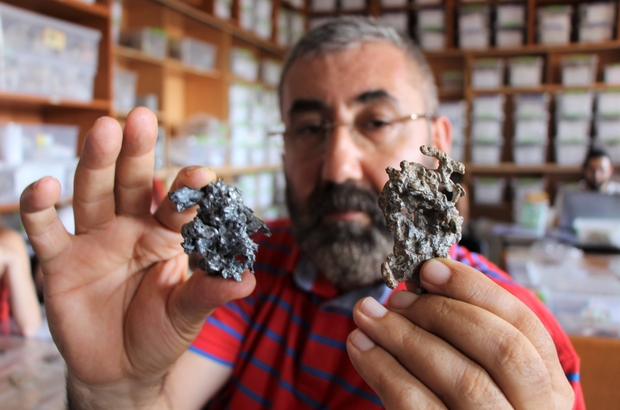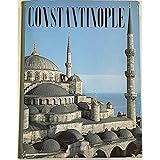Şevket DÖNMEZ*
Prof. Dr. Şevket Dönmez, İstanbul Üniversitesi, Edebiyat Fakültesi, Arkeoloji Bölümü, Protohistorya ve Önasya Arkeolojisi Anabilim Dalı, Beyazıt 34453 İstanbul, Türkiye. [email protected]
Turks are the privilaged others of the world history. With its nomadic origins, shepherds, hunting, nomadic lifestyles and especially warrior characters, it is a society that is feared but respected as well. Central Asia is the geography where Turks emerged and lived through their cultural and religious development phases.
Today’s archaeological findings and historical sources indicate that the larger part of the process of Turkish history in this great geography belongs to the Pre-Islamic periods. The nomadic steppe human clusters, which we will call Proto-Turan and Proto-Turkic in 1000s BC, have a pre-Abrahamic Religions period dating back to 1000 AD.
Contrary to the popular belief, the nomadic people are not without history. The fact that they did not use writing due to the socio-economic order and the nature-based culture they live in does not mean that these people do not have a history. In light of the contemporary evidence and considering the Sakae (the Eastern Scythians) as the earliest ancestors of Turks (Proto-Turan, Proto-Turks), the emergence of the Turks with their cultural and racial character in the historical scene even without using the name “Turk” dated to 3000 years before.
Sakae/(Eastern) Scythians – Huns – Gökturks – Oghuzs/Turkomans being the steppe nomads of the Central Asia, which later will be called Turkestan, are the Turkish societites which will establish a long cultural chain within the Turan cluster. This process which can be defined as Proto-Turk and started with Sakae who were distinguished by their steppe nomadic identity has continued largely unchanged with Huns and Gökturks.
Oghuzs and Turkomans which consists the final link in the chain of the Turkish peoples are a turning point. The adoption of the sedentary life of some of the Oghuz/Turkoman tribes with their conversion to Islam who genetically carried the socio-economic properties of the Sakae and inherited their steppe culture and nomadic life-style is a breaking point to this chain that continued since around the 1000s BC.
The common characteristics of the Sakae-Gökturks-Oghuz/Turkomans are that they were formed by the proto-feudal tribes. Examination of their history and culture, especially in terms of archaeology, means examining the Anatolian and Near Eastern Turks, who are their heirs.
It is seen that the archaeological findings and written sources belonging to the Persians have not been sufficiently taken into account by those who are interested in pre-Islamic Turkish archaeology, culture and history.
When the Persian findings about the Turks are examined, it is observed that the archeological, religious and cultural evidences show that the Turks, who started their historical period in the early 8th century AD, had a long-term “Protohistory” traced from the Near East and going back to the 10th century BC.
Evidence showing that Turkish history, culture and language originated in the north and east of the Caspian Sea is increasing day by day on the basis of the (Eastern) Scythians/Sakas, who are understood to be the autochthonous people of this region.
At the beginning of the 1st Millennium BC, Proto-Turkic communities and Proto-Turan clusters formed by the Saka, who were at the very beginning of their history, lived and wandered in a wide geography from the Caspian Sea to East Turkestan, from Southern Siberia to Northern India during the Iron Age.
Kurgans dated to the Early Iron Age (10th-8th centuries BC), which we can define as the Proto-Saka Period, indicate that the Saka emerged in Western Turkestan, which covers the geography of today’s Western Kazakhstan, Uzbekistan and Northern Turkmenistan.
While the archaeological findings of this geography indicate that the steppe culture began to evolve into warrior shepherds by taming the horse, it also shows that the real nomadic horse culture in Central Asia started with the Sakae.
It can be traced on the basis of burial traditions that the Saka clusters spread from the East Caspian coast to the southeast towards the Tian Shan – Fergana in the Early, Middle and Late Iron Ages, and to the northeast on the Altay – Mongolia route. The primary evidence of Sakae being the first people that have the Proto-Turkic/Turan identity is that they had the tribal social structure. Both the Sakas and the Huns – Gökturks – Oghuzs/ Turkomans, who followed this society in chronological order, were also nomadic societies with tribal organization. Tent is the smallest unit of the tribe. Tribe is the most basic part of society based on a lineage formed by blood ties and marriages.
In this context, it can be said that the Sakae were the first society of the Turkish lineage in the geography that would later be called Turkestan.
It can be understood from their physical appearance and anthropological features that the Sakae clusters living in the geography of Khorasan – Transoxiana in the east of the Caspian Sea are racially distant from Europe and Indo-European communities.
There is no archaeological problem in expressing the obvious differences in appearance between the (Western) Scythians and the (Eastern) Scythians. Just as the works depicting (Western) Scythians were made in workshops with ancient Greek influence, the reliefs in Persepolis Apadana Palace have contributions from ancient Anatolian and ancient Greek artists.
It will be the most important contribution of archaeology to the pre-Islamic Turkish archaeology and history to reveal the similarities of the Saka individuals of the Apadana Palace with the historical Turkic type, and the differences of the (Western) Scythians with the Proto-Turk clusters, and to carry out detailed style-critic studies within the framework of ordinary methods.
Keywords: Turk, Tura, Turan, Scythian, Saka






















